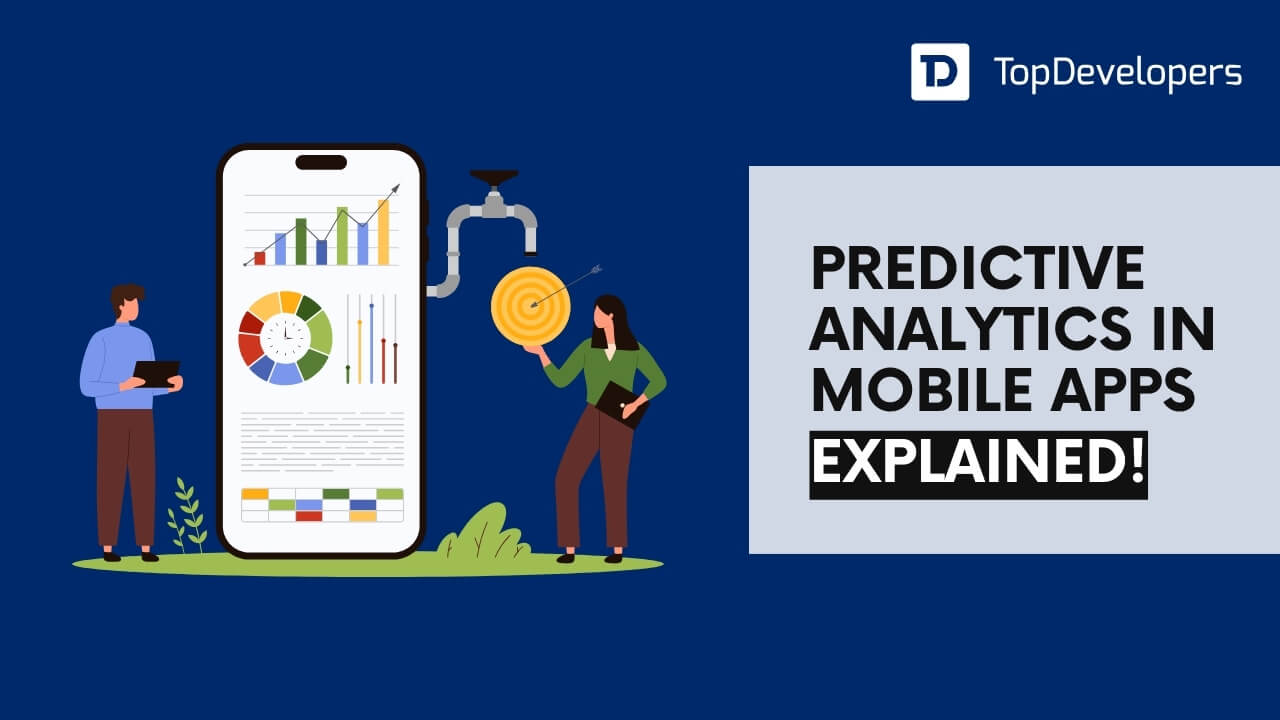
The mobile app market continues to be fiercely competitive, with many apps struggling to retain users beyond the initial download. Research shows that 77% of users abandon an app within three days of installation. To avoid becoming another statistic, it’s critical to address the most common development mistakes that often lead to app failure.
For businesses—from startups to enterprises—developing an app is a high-stakes venture where mistakes can lead to costly failures. Many apps fail due to insufficient market research, poor user experience, weak security, and a lack of scalability planning. This guide highlights the top mobile app development mistakes businesses make and provides actionable solutions to avoid these pitfalls, ensuring your app meets both user needs and business goals.
Table of Contents
- Top Mobile App Development Mistakes That Lead to Failure
- Inadequate Market Research
- Poor User Experience (UX) Design
- Ignoring Platform-Specific Guidelines
- Insufficient App Testing
- Poor Performance Optimization
- Lack of Scalability Planning
- Weak Security Measures
- Failure to Provide Regular Updates
- Ineffective Monetization Strategy
- Ignoring User Feedback
- Unable to fill the void
- Adding features in an unbalanced way
- Poorly optimized marketing strategies
- Fail to engage the users with unfriendly UI design
- Core app idea duplication
Top Mobile App Development Mistakes That Lead to Failure
Building a successful mobile app is challenging, and small missteps during development can lead to failure. Common mistakes like inadequate market research, poor user experience design, and ignoring platform-specific guidelines often result in apps being abandoned by users. Understanding and addressing these pitfalls early in the development process is essential to ensure your app stands out and thrives in the competitive mobile market. Here we have highlighted the most important mobile app development mistakes and provided practical solutions to avoid them.
Inadequate Market Research
Problem: Many businesses start app development without understanding their target audience or competitors. This lack of market research leads to products that don’t meet user needs or are overshadowed by competitors. Without identifying app user pain points or market gaps, the app can fail to stand out or solve real problems, leading to low user adoption and engagement.
Solution: Conduct comprehensive market research to identify target audience, competitors, user preferences, and trends. Use tools like Google Trends, App Annie, and in-depth surveys. Build detailed user personas to ensure your app solves real pain points and stays competitive.
Poor User Experience (UX) Design
Problem: Poor UX design, such as confusing navigation, unclear call-to-actions, and slow loading times, drives users away. Many mobile apps suffer from overcomplicated interfaces, causing frustration and a steep learning curve for users. Without seamless navigation and a smooth user journey, users are likely to abandon and uninstall the app quickly, leaving negative feedback.
Solution: Prioritize user-friendly mobile app designs with intuitive navigation and fast performance. Conduct usability testing and A/B testing to refine the user experience. Ensure the user onboarding process is simple and welcoming, as the first impression is critical in retaining users.
Ignoring Platform-Specific Guidelines
Problem: Failing to adhere to platform-specific guidelines for iOS and Android can result in apps that feel out of place or clunky. Each platform has distinct design principles, and when app developers ignore these, users may find the app difficult to use or unfamiliar, leading to a poor experience and higher uninstall rates.
Solution: Follow platform-specific guidelines like Apple’s Human Interface Guidelines and Google’s Material Design to ensure a native and consistent feel. Pay attention to gestures, navigation styles, and system integrations specific to each platform for a smoother user experience.
Insufficient App Testing
Problem: Many mobile apps suffer from inadequate testing, leading to errors, bugs, crashes, and performance issues on different devices and operating systems. Quick app launch without proper testing across various platforms cause apps to behave inconsistently, frustrating users and damaging app reputation.
Solution: Implement thorough app testing processes, including device and OS compatibility tests. Use real-device testing to catch issues early. Also, Beta testing can help gather feedback from actual users, helping developers fix bugs and optimize performance before the official app release.
Poor Performance Optimization
Problem: Mobile apps that consume excessive resources, such as memory and battery, or have long and slow load times, create a frustrating user experience. Performance issues, such as unresponsiveness and lag, often lead to uninstalls and negative app user reviews. Users expect fast, responsive apps, and failing to meet this standard can lead to lower app user retention rates.
Solution: Focus on performance optimization by using cloud infrastructure for smoother data processing, reducing resource consumption, and optimizing the backend. Regularly monitor mobile app performance metrics and update your app to fix slow load times or excessive battery drain. Ensure your app runs smoothly across various devices and conditions.
Lack of Scalability Planning
Problem: Apps that are not developed for scalability struggle to handle increased user traffic as they grow. As more users join, these apps face performance issues, slowdowns, and crashes. Without future-proofing your app, it may become obsolete as its demands increase.
Solution: Plan for scalability of your mobile app from the start. Use cloud infrastructure and modular architecture to handle growing traffic. Implement load balancing techniques and scalable backend systems that allow the app to expand effortlessly as your user base increases.
Weak Security Measures
Problem: Data breaches and weak security protocols can devastate an app’s reputation and lead to a loss of user trust. Poor encryption, insecure authentication, or vulnerable data storage practices expose users to security risks, which can have severe legal and financial implications.
Solution: Implement strong encryption, secure data storage, and multi-factor authentication. Regularly audit your app for security vulnerabilities and ensure compliance with data privacy regulations like GDPR. Addressing security proactively safeguards your app and builds user trust.
Failure to Provide Regular Updates
Problem: Apps that lack regular updates become outdated and lose user engagement. Without continuous improvements, new features, or bug fixes, mobile applications fail to stay relevant. Users expect ongoing support, maintenance, and improvements, and without these, they quickly abandon the app.
Solution: Establish a regular mobile app update cycle. Address bugs, improve performance, and introduce new features based on user feedback. Staying consistent with updates not only keeps the app relevant but also demonstrates to users that their experience is a priority.
Ineffective Monetization Strategy
Problem: Poorly executed monetization strategies, such as intrusive ads or high upfront costs, can drive users away. Users may be discouraged from engaging with your app if your monetization disrupts their experience or feels unfair.
Solution: Choose a user-friendly monetization strategy like freemium, in-app purchases, or non-intrusive ads. Balance revenue generation with a smooth user experience to ensure long-term retention and growth. Apps that offer value before pushing monetization tend to retain a more loyal user base.
Ignoring User Feedback
Problem: Failing to address user complaints or suggestions leads to a stagnant app that doesn’t evolve with user needs. Ignoring feedback and app reviews can cause users to feel undervalued, resulting in negative reviews and higher churn rates.
Solution: Online app reviews do matter. Actively gather user feedback through in-app surveys, app store reviews, and social channels. Implement changes based on this app review and feedback to improve user satisfaction. Engaging with your audience and showing responsiveness builds trust and fosters long-term loyalty.
Unable to fill the void
Problem: Many apps fail because they don’t adequately address a user’s needs or solve a problem. Without a clear purpose or unique selling proposition (USP), apps struggle to attract or retain users.
Solution: Before the process of mobile app development begins, identify a clear problem that your app will solve. Use market research to pinpoint user pain points and ensure your app fills a genuine need. Validate your concept with potential users through surveys and interviews to confirm its relevance.
Adding features in an unbalanced way
Problem: The feature-rich app that solves real-life problems is good, but too many of anything is not good. The same goes for building too many features in the app. The app with basic features must be complemented with unique features to keep up with the competition.
However, sometimes, the appreneurs end up loading the app with too many features that confuse or overwhelm users. The excessive mobile app features create an adverse impact on the app’s usability and the experience it renders. The increased complexity leads to mobile app failure.
Solution: Launching an app with basic features that target users’ expectations is good. Later, enhancing the app gradually with extra features is the best practice that helps in analyzing the users’ reactions to the new additions and app performance.
Poorly optimized marketing strategies
Problem: The wrong belief in building and launching the application will automatically bring the audience to the app, leading to mobile app failures. Instead, the app marketing strategy is planned before the app launch. This mistake won’t bring the app before the target audience.
Solution: The MVP launch enables businesses to test the app idea in the market and can build a buzz before the full-fledged solution is released. The planned releases along with UX strategies help in augmenting the user experience in gradual releases.
Fail to engage the users with unfriendly UI design
Problem: The app UI acts as a cover page of the book that people judge before they browse the internal pages. It creates an indelible impression on the users at first glance. When the User Interface is loaded with so many design elements, weird color contrasts, and large-size images, it creates an environment that deters the users from using the app.
Solution: The mobile app designers should pay extra attention to minimalistic design, that’s in trend. A clean interface with an optimal number of designs and no resolution issues is preferred. The minimum use of animations ensures good performance. Keep the navigation seamless so that users can easily move from one page to another hassle-free.
Core app idea duplication
Problem: Creating clones of the existing popular apps is commonly seen nowadays, but it’s not healthy for the app’s future. After some time, this strategy makes the businesses fail. Even the app stores have strict guidelines and rules that scan the app that lacks originality. Such apps fail to win the users as they lack USP.
Solution: Taking a gist of the existing app is not bad at all. Remember, the on-demand taxi apps launched after Uber ride-sharing app has gained enough traction when they used the on-demand model but implemented the unique features. This strategy makes the app stand out and increases the probability of business success.
Ensuring App Success!
Avoiding these common mistakes is critical for businesses aiming to launch successful mobile apps. By conducting thorough research, focusing on user experience, optimizing performance, and ensuring robust security, you can significantly improve your app’s chances of long-term success. Data shows that 80-90% of apps are abandoned after a single use, but with proper planning and continuous updates, your app can stand out in the crowded marketplace. Implementing these solutions will help your app thrive, ensuring higher user engagement, satisfaction, and profitability.
 Avantika Shergil
| Oct 14, 2024
Avantika Shergil
| Oct 14, 2024
Avantika Shergil is a technology enthusiast and thought leader with deep expertise in software development and web technologies. With over 8 years of experience analyzing and evaluating cutting-edge digital solutions, Avantika has a knack for demystifying complex tech trends. Her insights into modern programming frameworks, system architecture, and web innovation have empowered businesses to make informed decisions in the ever-evolving tech landscape. Avantika is passionate about bridging the gap between technology and business strategy, helping businesses build customized software and website, and understand about different tools to leverage effectively for their ventures. Explore her work for a unique perspective on the future of digital innovation.





